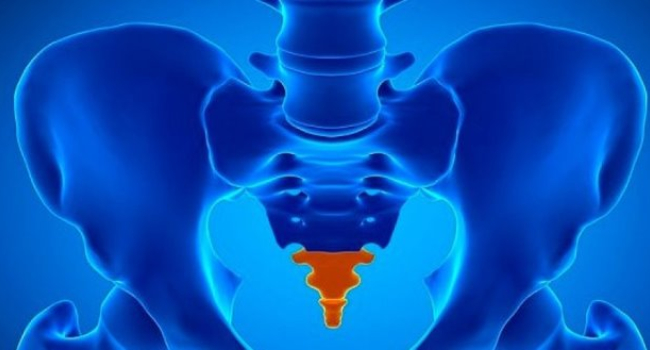- Latest news▼
-
19:32, September 7 U.S. reports first case of bird flu infection in a person who had no contact with animals

-
08:35, September 6 Researchers find link between air pollution and higher infertility risk in men

-
21:39, September 5 Scientists reveal best time to take high blood pressure tablets to prevent heart attack, stroke

-
17:29, September 5 HealthDay: prolonged cell phone use does not increase risk of brain cancer

-
13:54, September 5 108 cases of West Nile virus recorded so far in Armenia, health minister says

-
11:32, September 5 Nature: fluctuating cholesterol levels increase the risk of atherosclerosis even in the young

-
16:06, September 4 3 dead from West Nile virus in Armenia’s Armavir Province, according to preliminary data

-
19:29, September 3 Scientists discover hundreds of potential new cancer-causing genes

-
17:04, September 3 The Conversation: carbonated water is just as healthy as non-carbonated water

-
14:04, September 3 ESC: hypertension medications can be taken both in the morning and in the evening

-
08:39, September 3 Innovative program of workplace health checks introduced in England

-
23:35, September 2 HealthDay: Healthy lifestyle keeps diabetes from aging the brain

-
17:01, September 2 HealthDay News: Ubrogepant prevents migraine attacks in 65% of test subjects

-
15:50, September 2 549 cases of measles recorded in Armenia so far in 2024

-
11:30, September 2 Autism Research journal: Autistic people surpass ordinary persons in mental imagination ability

All materials
Geneticists discover mutation that deprived ancestors of humans, primates of their tails

American molecular biologists have found that the common ancestor of humans and higher primates was deprived of a tail due to a self-replicating DNA insertion in a segment of the TBXT gene, which controls the growth of the tail in the mammalian embryo. That mutation also made our ancestors vulnerable to vertebral fractures, the researchers wrote in the Nature magazine article.
Evidence was found that insertion of self-replicating DNA into the regulatory region of the TBXT gene caused our ancestors to lose their tails. Incorporating that gene into the DNA deprived the mice of their tails and also made them vulnerable to spina bifida, a developmental defect that affects about one in a thousand children, the study noted.
This was the conclusion reached by a group of American biologists under the leadership of New York University biologist Itai Yanai, who was studying how different the structure of 140 genes related to the formation of the mammalian tail is in the genome of humans, higher primates, and most other warm-blooded animals.
In general, researchers managed to identify nine original mutations in those genes characteristic of primates and humans, which considerably affected their function; only one of them related to the tail growth program and did not cause disruptions in the development of other parts of the body. The mutation was found within one of the introns that control parts of the TBXT gene, which had previously been linked to the tail growth program in mammals.
The mutation was caused by the insertion of the "Alu segment" in that part of the TBXT gene, which accounts for about 10 percent of the total length of the primate genome. The appearance of an Alu copy in the TBXT gene has caused primate cells to miss an important part of that DNA segment when "reading" the gene, resulting in the production of an accelerated version of the TBXT protein that cannot execute the tail growth program.
To test this theory, the researchers made similar measurements of the structure of the TBXT gene in the mouse genome. This not only deprived the rodents of their tails, but also made them vulnerable to spinal fractures, which is not characteristic of mice and other rodents, but regularly occurs in humans. This proves that the mutations that deprived the common ancestors of primates and humans of their tails also made them vulnerable to this developmental defect, concluded Professor Yanai and the other researchers.
Follow NEWS.am Medicine on Facebook and Twitter
- Video
- Event calendar
- Archive
- Most read
month
week
day
- HealthDay News: Ubrogepant prevents migraine attacks in 65% of test subjects 1640
- 3 dead from West Nile virus in Armenia’s Armavir Province, according to preliminary data 1358
- 549 cases of measles recorded in Armenia so far in 2024 1212
- Autism Research journal: Autistic people surpass ordinary persons in mental imagination ability 1208
- HealthDay: Healthy lifestyle keeps diabetes from aging the brain 1185
- Scientists discover hundreds of potential new cancer-causing genes 1110
- ESC: hypertension medications can be taken both in the morning and in the evening 1088
- The Conversation: carbonated water is just as healthy as non-carbonated water 1075
- Innovative program of workplace health checks introduced in England 1067
- HealthDay: prolonged cell phone use does not increase risk of brain cancer 809
- Nature: fluctuating cholesterol levels increase the risk of atherosclerosis even in the young 725
- Scientists reveal best time to take high blood pressure tablets to prevent heart attack, stroke 611
- Researchers find link between air pollution and higher infertility risk in men 583
- 108 cases of West Nile virus recorded so far in Armenia, health minister says 538
- U.S. reports first case of bird flu infection in a person who had no contact with animals 267
- Find us on Facebook
- Poll





